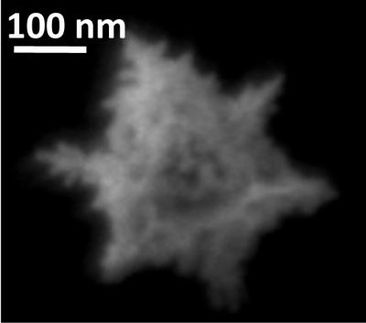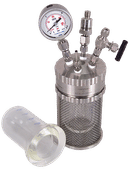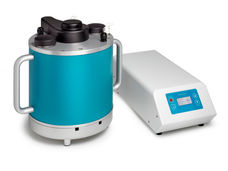The Million Euro Nanoreactor
Advertisement
Jeroen Cornelissen of the Institute for Molecules and Materials at the Radboud University in the Netherlands has recently received EUR 1 million from EURYI (European Young Investigator Awards). The award will allow Cornelissen (35), an assistant professor at Radboud and a member of the scientific board of a macromolecular research spin-off company, to establish his own research group in the field of nanoscience, something that is not usually possible for such a young scientist, and could ultimately lead to important discoveries on the European and international arenas.
Cornelissen is a researcher within the SONS (Self-Organised NanoStructures) research frameworks having worked with Radboud's Professor Roeland Nolte in BIONICS. "As an assistant professor I co-supervised the research team that contributed to the BIONICS project," says Cornelissen. "That project provided a platform for us to carry out internationally competitive science and allowed us to interact with top-level European research groups," he adds, "These contacts are extremely valuable for a young scientist."
He also works with Professor Alan Rowan of the University of Nijmegen, who now captain's the SONS2 SUPRAMATES program. "In Nijmegen, there is a very strong collaborative effort between the group of Professor Rowan and the Nolte/Cornelissen group," Cornelissen says.
Having begun in the field of synthetic and physical organic chemistry, Cornelissen is increasingly focusing on the assembly of biomacromolecules. "A major theme at the moment is the synthesis of hybrid materials of synthetic polymers and biomacromolecules and their self-organization properties," he explains, "This work is combined with the use of protein materials from a harmless plant virus for constructing functional materials and nanometre-sized reactors."
One putative nanoreactor is the spherical protein shell, or capsid, of the plant virus cowpea chlorotic mottle virus (CCMV). It is possible to trap chemical precursor compounds and catalysts within these hollow capsids. In so doing, the team hopes to improve our understanding of chemical reactions and also to improve the efficiency of industrially important reactions by directing the pathway to reduce the formation of by-products.
Because the capsid wall is porous, the precursor compounds can enter and are trapped by changes in acidity within. "We can synthesize well-defined inorganic particles inside," explains Cornelissen, "these can then react to form useful products."
Cornelissen plans to maintain and extend the research team active in the virus capsid project utilising the money from the EURYI award. The judging committee, based at the European Science Foundation (ESF), has complete confidence in the project and the scientific group and recognises the extremely high potential.
"In the first part of the project we will study single enzyme reactions in conditions more akin to the workings of a living cell, compared to traditional single molecule studies that are carried out under high dilution with catalysts chemically or physically linked to a surface," explains Cornelissen. "This system will be extended to multiple enzymes, allowing the detailed study of cascade reactions. Eventually this will lead to a better understanding of the coupling of reactions in place and time."
Next, Cornelissen hopes to be able to load the viral particles with small molecules that can be linked together to form polymer chains within and so alter the internal structure of the capsids. "Eventually the inclusion of such functional polymers will lead to tuneable nanoreactors with specific chemically reactive properties," says Cornelissen. More specifically, Cornelissen suggests that precursors for iron-based inorganic salts could be included, which under the influence of light would solidify to form well-defined magnetic particles that are limited in size by the constraints of the virus capsid. The possibilities are almost limitless.
Other news from the department science
These products might interest you
Most read news
More news from our other portals
See the theme worlds for related content
Topic world Synthesis
Chemical synthesis is at the heart of modern chemistry and enables the targeted production of molecules with specific properties. By combining starting materials in defined reaction conditions, chemists can create a wide range of compounds, from simple molecules to complex active ingredients.

Topic world Synthesis
Chemical synthesis is at the heart of modern chemistry and enables the targeted production of molecules with specific properties. By combining starting materials in defined reaction conditions, chemists can create a wide range of compounds, from simple molecules to complex active ingredients.































































